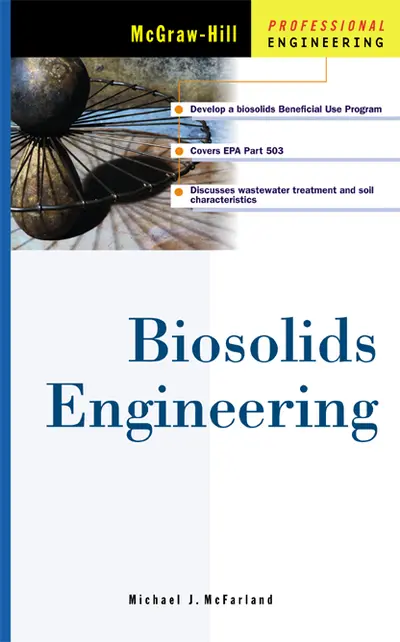My Account Details

ISBN10: 0071500170 | ISBN13: 9780071500173

Step 1 . Download Adobe Digital Editions to your PC or Mac desktop/laptop.
Step 2. Register and authorize your Adobe ID (optional). To access your eBook on multiple devices, first create an Adobe ID at account.adobe.com. Then, open Adobe Digital Editions, go to the Help menu, and select "Authorize Computer" to link your Adobe ID.
Step 3. Open Your eBook. Use Adobe Digital Editions to open the file. If the eBook doesn’t open, contact customer service for assistance.
Expert help for designing and managing a biosolids program So notoriously complex and occasionally controversial that it has paradoxically reduced biosolids applications in some locales, CFR Part 503 becomes understandable, manageable, and doable with this expert guide from experienced environmental engineer Michael J. McFarland, diplomate of the American Academy of Environmental Engineers and certified Grade IV wastewater and water treatment operator. If you have interest in or responsibility for fulfilling the intent of Part 503, putting biosolids and organic residues to beneficial use and decreasing the burden on landfills, Biosolids Engineering can help you: *Control the factors in wastewater and biosolids processing that affect usability *Apply soil chemistry and physics to finding safe and appropriate uses for biosolids *Design needed hydraulic, storage, and transport systems *Ensure pathogen and vector attraction reduction *Make biosolids engineering a team effort with agricultural specialists, mining engineers, water treatment officials, and highway, transportation, and timber specialists *Apply sampling and analysis protocols for effectiveness and safety *Increase public awareness of the safety and value of biosolids applications
Chapter 1: Legal Aspects of Biosolids Management. Chapter 2: Biosolids Characteristics and Production Rates. Chapter 3: Biosolids and Sludge Processing. Chapter 4: Control of Biosolids Quality. Chapter 5: Transport, Storage and Facilities Design. Chapter 6: Fundamentals of Soil and Water Interactions. Chapter 7: Beneficial Use of Biosolids. Chapter 8: Sampling and Quality Assurance.
Chapter 3: Biosolids and Sludge Processing. Chapter 4: Control of Biosolids Quality. Chapter 5: Transport, Storage and Facilities Design. Chapter 6: Fundamentals of Soil and Water Interactions. Chapter 7: Beneficial Use of Biosolids. Chapter 8: Sampling and Quality Assurance.
Chapter 5: Transport, Storage and Facilities Design. Chapter 6: Fundamentals of Soil and Water Interactions. Chapter 7: Beneficial Use of Biosolids. Chapter 8: Sampling and Quality Assurance.
Chapter 7: Beneficial Use of Biosolids. Chapter 8: Sampling and Quality Assurance.
Need support? We're here to help - Get real-world support and resources every step of the way.